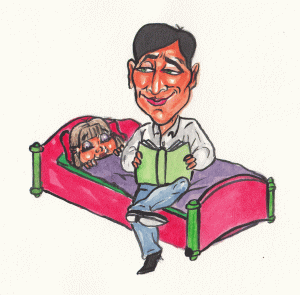There are two basic methods of persuading someone about your ideas in a reasonable way.
The first method – our oldest and most thoroughly explored – is storytelling. Storytellers have always had a high status in our societies. They influence us by dipping into their storyteller’s magical bags and pulling out all sorts of tricks to play on our reason and emotions. Their aim, of course, is to plant their stories’ morals in our unsuspecting heads.
Yes, stories can be exciting, emotional and personal. We all respond to their magic and sometimes become quite attached to them. To tell you the truth, though, there are some significant disadvantages and fallacies inherent in storytelling; more on that later.

The second method of persuasion is scientific. How does it work? What are all these scientists up to? One broad group of scientists constructs abstract, logical (and usually boring) models, designed as simplifications of our living reality. (Does that sound complicated? It is – that is the scientific way.)
There is another group of scientists involved in scientific application. They test these models, disproving them, confirming them, or finding circumstances or phenomena in our environment – the real world – that the models fail to explain. Usually, the arrow of time takes this path: science testers (observers, idea developers) come before science rationalizers (scholars) – but that is a long topic.
So, what is wrong with science? Yes, science is exciting, and it may help you answer exciting questions. But what discourages people from involvement with science is its complexity, and especially its complex language. Scientists use special terminology that only they understand. (Others could understand it too, but only after a lot of studies.) Even scientists from different fields experience problems communicating with each other since neither understands the other’s specialized terminology.
People are curious and they want to understand the world. Just look at the popularity of science (science fiction) movies and (pseudo)science TV channels. The only things that disarm people’s pursuit of science are its complexity and the complexity of its language (and the time and money to invest in breaking through those complexities).
Because its theories directly affect your wealth, I shall try to explain some parts of social science using popular language and stories.
——————————
Is there something wrong with using stories? Oh yes, it presents tons of problems. A story describes an event that happened at a specific time and in a specific place, then it draws a conclusion about life in general or invites the audience to draw such a conclusion. A story may be exciting, and its characters may be real, famous people, but it still only describes a single event – so the conclusions drawn may not be broadly applicable.
Another common drawback of stories is that they’re very often told by – or from the viewpoint of – the winners or survivors of the events described. This naturally “colors” the stories themselves, as well as any conclusions drawn.
Stories can affect the reader or hearer emotionally, sometimes so strongly that they draw conclusions that are irrational or even immoral.
Stories are often told long after the events they describe so that the teller must rely on memory in describing those events. Unfortunately, our brains are not the most reliable and unbiased source of information in the universe, so the facts are sometimes far from straight. Still, they’re the best brains we have, and we’ll just have to live with them.
With the noble objective of increasing your wealth, I shall use both methods of communication: science and storytelling. I’ve described each method here so you will be aware of their general limitations.